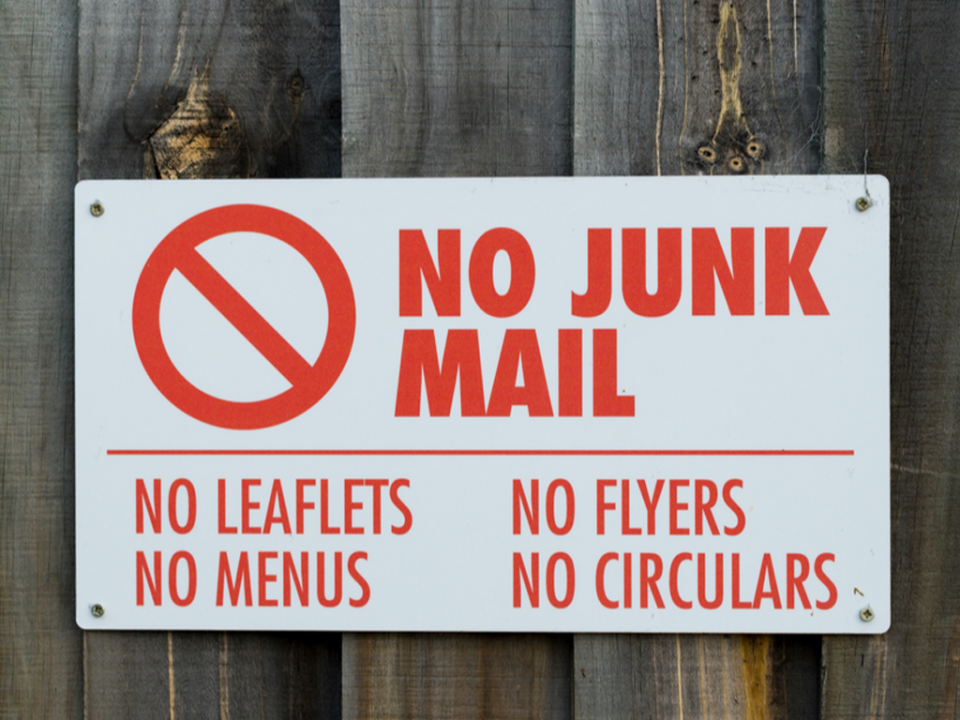Did We Sh*t The Bed…Again?

Restoring Consumer Faith
June 2, 2021
Farewell Cookies
June 2, 2021Did We Sh*t The Bed...Again?

Marketers, Did We Sh*t The Bed... Again?!
In 2005, more than 21 billion items of junk mail, from unsolicited coupons to credit card offers, were shoved through the letterboxes of Britons up and down the country. Considering the population then stood at just under 60.5 million (including children), that’s a hell of a lot of direct mail.
Of course, anyone old enough to remember those days will also be familiar with the massive backlash that resulted against the industry. Government lobbying, environmental protests, the rise of direct mail blocking services and even the issuance of a direct marketing code of practice by the ICO.
Lucky for us, the door to the digital world was just opening, with the promise of access to even wider markets, more consumer information and the opportunity to “track’ their engagement.
Instead of seeing the error in our ways and learning any great moral, we simply jumped ship and doubled down on digital.
Out with the old
The speed to market and ability to scale campaigns at a global level via digital marketing, led to a seismic shift away from traditional marketing channels, revolutionising entire business strategies and in turn the marketing strategies that supported them.
It was like moving from open fire cooking to gas. Marketing budgets were boosted and redistributed heavily towards the digital carrot set before us. Between 2005 and 2018, while direct marketing budgets declined, digital as spend in the UK has rocketed 375%, from £1.4 billion to £5.25 billion, as we bid against one another to bombard consumers with our offers and marketing messages at as many touchpoints as possible.
But we sh*t the bed…
With our focus placed on conversions, access to over-simplified buying platforms and an over-reliance on third-party cookies, our marketing endeavours have once again managed to piss off the public, only on a much larger scale.
High profile scandals around the application of personal data by the likes of Facebook and Cambridge Analytica have made consumers aware that their data has value. Meanwhile, research from Oracle shows that they’re even more cynical about its use, with brand trust at an all-time low:
● 92% of consumers do not trust recommendations from chat or messaging pop-ups on websites
● 81% do not trust ads on mobile devices
● 43% of consumers have blacklisted a brand as the result of a bad experience
A major cause for this dissatisfaction sits with third-party data, or our use of third-party data to be exact.
Just as we did with direct mail, in a bid to establish closer relationships with prospective and existing customers, we turned to the purchase of third-party data to gain additional audience insights.
For decades, data businesses operating within the law, have developed processes for harvesting data and selling it on to third parties. Increasingly, there is recognition that although this data was legally compliant at the time of collection, consumers never knowingly gave permission for their data to be sold on to, and used by other companies.
The revision of data use and consent rules under the GDPR aimed to tackle these issues. Yet even the most protected aspects of data - like sexual orientation, religious or political beliefs - are still being wittingly and unwittingly used for targeted advertising and real-time bidding.
In fact, Ogury’s 2019 Reality Report revealed that despite new rules on the provision of consent notices, even after reading notifications, more than half of consumers still don’t understand how their data will be used.
…and it looks like we’ll do it again
It wasn’t until January, when Google announced its plans to phase-out third party cookies by 2022 that the industry really sat up and listened.
While some are waiting to see what the Google Privacy Sandbox will have to offer, most of the Adtech industry is racing to develop the next loop-hole or work around, that will minimise disruption within the industry, regardless of the very clear call from both consumers and regulators for more transparent, consumer-centric practices.
Already, the hot options they’re looking at include device fingerprinting, cookie-free ad networks and contextual advertising. The problem is that anything which ignores increasing audience awareness and concern will be a short-term solution, which will ultimately be regulated or banned in the not too distant future, and we’ll find ourselves in the exact same situation yet again.
A sustainable solution
A fundamental shift in the way we perceive consumers and their data is required if we’re to stop repeating the same mistakes as before.
There is no need for data driven marketing to be ‘wind tunnel marketing’ or to focus on targeting and optimisation. With over 3bn smart device users, data driven technology (data-tech) has the potential to ‘engage and delight’ audiences at significant scale. It can communicate the idea behind your brand to your audiences, across international boundaries, while tailoring this idea to appeal to each individual‘s imagination. It has added benefit of the capability to deliver tactical communication, that is consistent, on-message and more subtle than the traditional algorithmic targeting of the ‘math-men’, to an engaged ‘warm’ audience.
To unleash this potential, we must change the ‘data relationship’ between brands and consumers, from one based on mistrust and lack of control, to a transparent data/value exchange. In an exchange such as this, the audience benefits from the value of the user experience providing their data enables, and the brand benefits from the resulting, more positive audience engagement. Through AGENT (audience generation and engagement technology), Mymyne’s mission is to make this a reality.
Get in touch to find out how we can help you develop a scalable, sustainable marketing solution, powered by first-party data.





